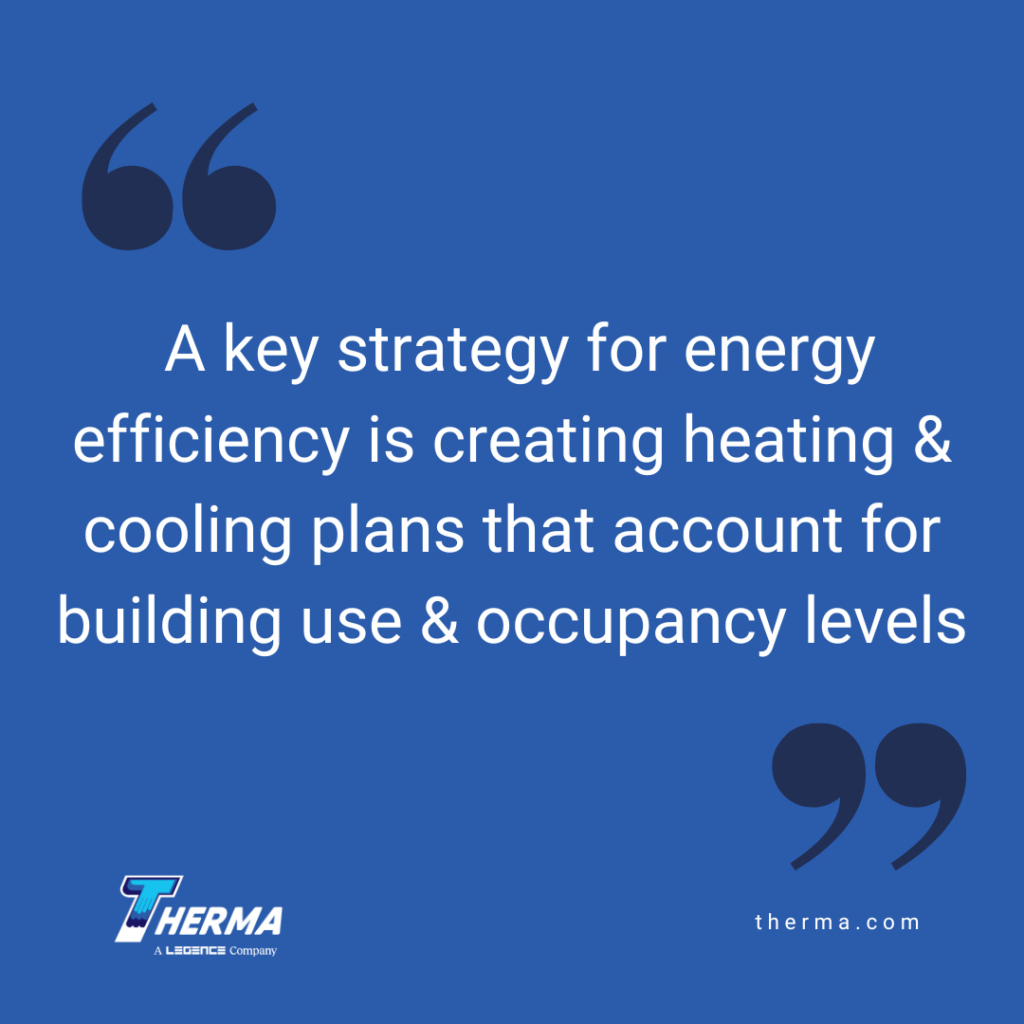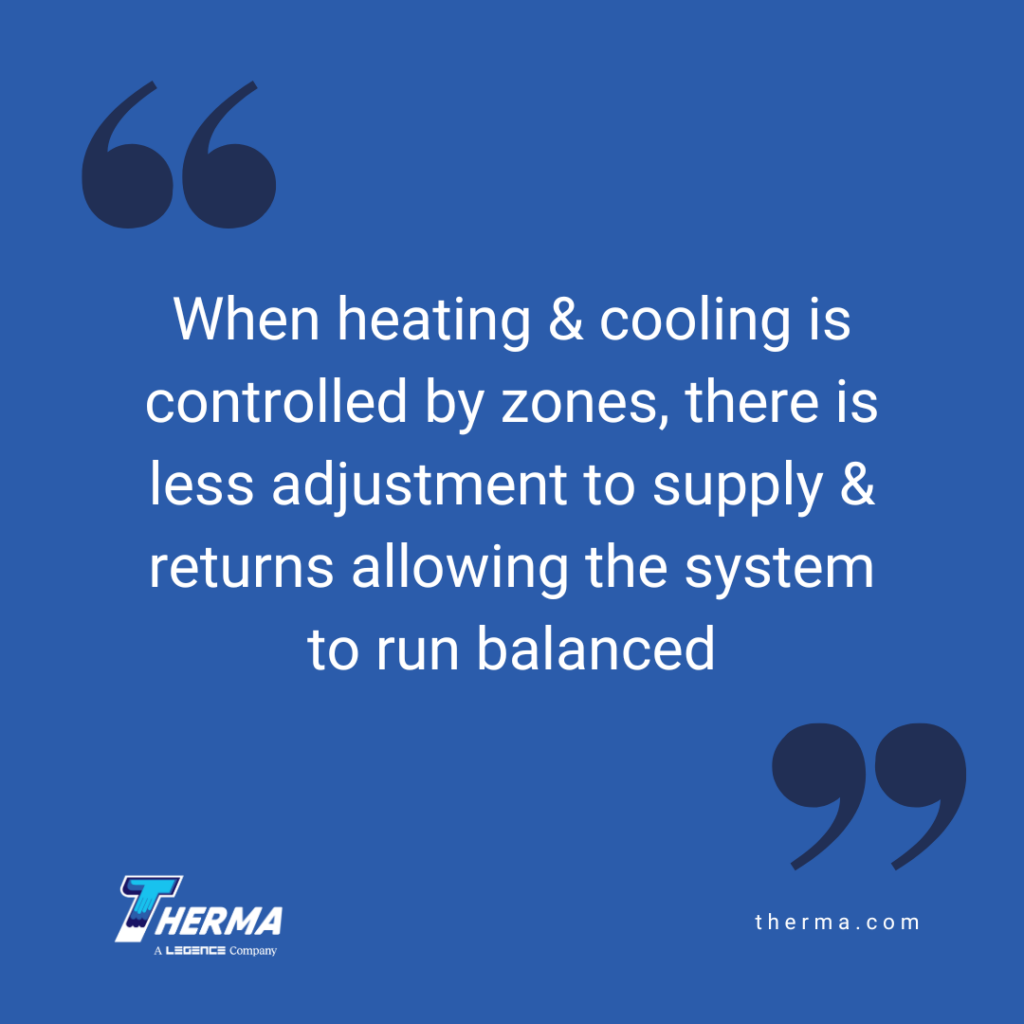by Ali Kriscenski
HVAC Systems are critical to building and facility comfort and safety. A key strategy for energy efficiency is creating heating and cooling plans that account for building use and occupancy levels. Through the use of an HVAC zoning system, you can achieve system efficiency by using energy where and when it is needed.
Identifying HVAC Zones
Depending on programs, buildings, and facilities have areas of varying occupancy, uses, and heating and cooling needs. In areas with high occupancy, thermal comfort is a priority to ensure the wellness and productivity of occupants. In utilitarian areas, such as storage or fleet garages, heating, and cooling can be adjusted to account for lower occupancy levels and seasonal schedules. Mapping out zones that can operate on varying temperature settings, even small variations, can improve energy efficiency overall.
Utilizing HVAC zones can help other equipment and systems run more efficiently. For example, data centers have different HVAC requirements than office space, but both fluctuate throughout the course of the day and night. Zoned HVAC systems can be programmed to adjust energy use according to heating and cooling demand. The ability to maintain ideal temperature settings will help prevent overheating of computers, printers, servers, and other critical business operations.
Separate Temperature Control
When building HVAC systems are created with multiple zones, each zone can be monitored and operated with a separate thermostat that adjusts supply and temperature. This helps prevent overheating or overcooling of spaces, conserving energy throughout the building or facility.
Zoned HVAC can also contribute to reduced energy costs by working in conjunction with passive solar or shading. As the sun shifts around a building throughout the day, the solar gain and thermal solar energy create varied heating and cooling demand as spaces are in sunlight or shade depending on the time of day. Multi-zone HVAC systems can adjust to these variations.
Remote Operating Capability
As zoned systems utilize programmable sensors and devices, the system becomes more manageable with centralized controls or even remote options. Depending on the conditions and monitoring requirements, your new HVAC zones could feed into multiple thermostat management systems even without a full building monitoring system (BMS).
Improved System Longevity and Operations
One of the benefits of implementing HVAC system zoning is less demand for the system components. When heating and cooling is controlled by zones, there is less adjustment to supply and returns allowing the system to run balanced. HVAC systems that run efficiently require fewer repairs, and less frequent maintenance, and are more likely to be operational longer.
When systems are running at peak, the high performance will also coincide with reduced energy costs. As zoned spaces are integrated into the overall HVAC strategy, reduced energy costs will start to be achieved. And, because zoned systems can utilize multi-thermostat readings, the system can be adjusted and calibrated to achieve optimum energy efficiency.
Designing HVAC Zones
As your energy efficiency strategy is established or evolves, the designation of HVAC zones can be a significant component of success. Utilizing zones, and more widely distributed devices provides an opportunity to expand building monitoring and management. Enlisting the help of an HVAC expert can be invaluable for long-term system design and integration. Contact Therma today to learn more.
AUTHOR BIO
Ali Kriscenski was trained in high-performance building design at Boston Architectural College. She has worked with leading architecture and construction firms in NYC and New England and served on the executive team at the Forest Stewardship Council International. She was the managing editor at Inhabitat and has worked pro bono for the Green Building Institute, ISEAL Alliance, and Habitat for Humanity.
Sources
Environmental Leader – 3 Ways to Improve Energy Efficiency of Building Systems
Whole Building Design Guide – High Performance HVAC









